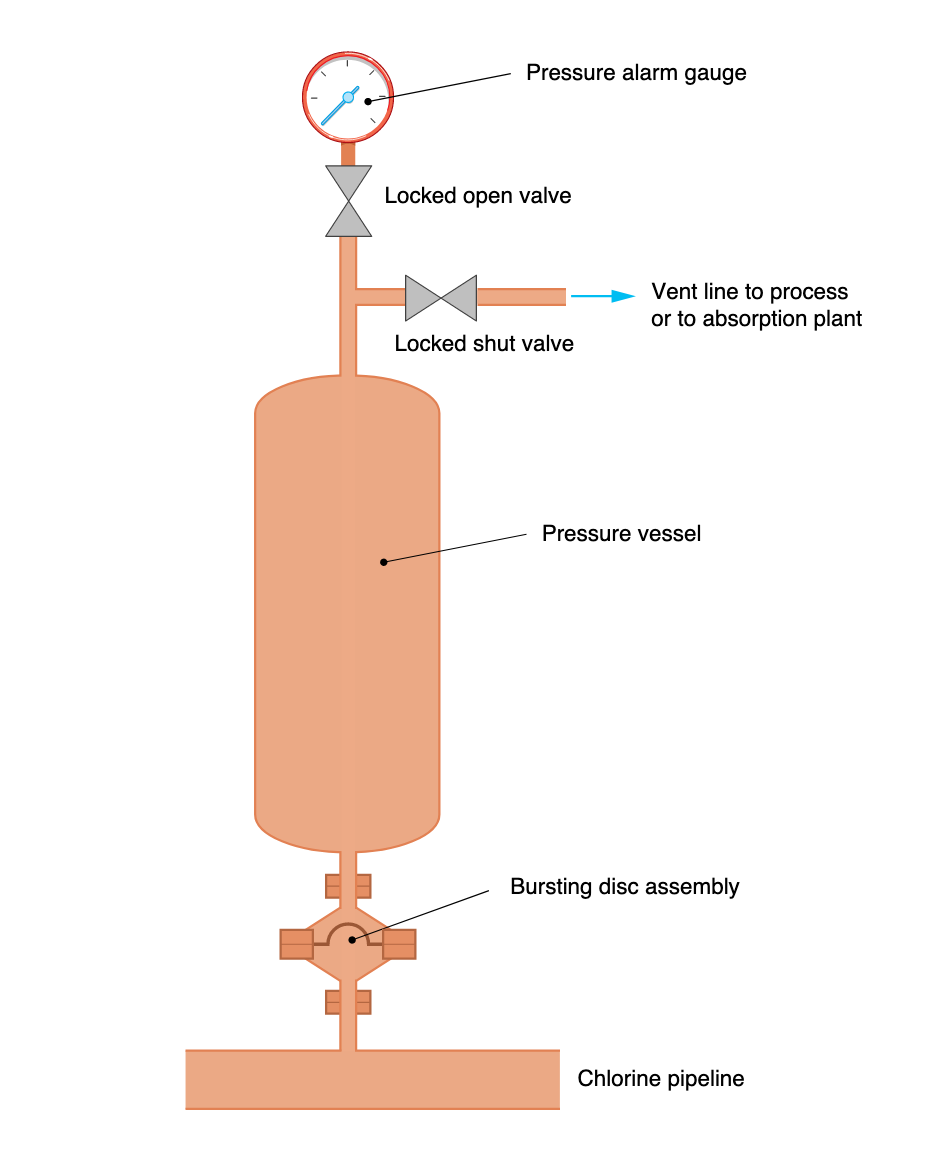 We visit this topic once again as I have already spent time with a “former client” who is now in a serious bind with both OSHA and EPA after a significant Chlorine (Cl2) release. They are a former client as they fired me after a 5-year PHA and 3-year audit a number of years ago. They hired me because of their frustrations regarding the handling of their Cl2 and their inability to control it. They were one of the clients who thought I was certifiable crazy and wondered where on earth I kept getting all of these “crazy designs” for such a “small process”. During their 5-year PHA revalidation, which was more like an initial PHA, it was discovered during the opening meeting and our process walk-down that the process, although small on a grand scheme of things, had no hydrostatic relief protection on the liquid pipe runs. This of course was identified as a serious design error, which then led me to ask what RAGAGEP was used to design and construct the process. And you can guess what caused this latest RQ release of Cl2… pipe failure due to trapped liquid Cl2 from when they shut down their process WITHOUT following their Normal Shutdown SOP and left liquid Cl2 in the piping (Note this was one of the COVID-19 releases I mentioned a few weeks ago). Once we got some summer temps, the pipe catastrophically failed (quite dramatically I might add) and released the Cl2. Of course, both OSHA and EPA, went right to the point of release and asked how it happened and their next question was “doesn’t the Chlorine Institute piping pamphlet require expansion protection?” So I ask again… Why do so many process engineers hate hydrostatic relief systems?
We visit this topic once again as I have already spent time with a “former client” who is now in a serious bind with both OSHA and EPA after a significant Chlorine (Cl2) release. They are a former client as they fired me after a 5-year PHA and 3-year audit a number of years ago. They hired me because of their frustrations regarding the handling of their Cl2 and their inability to control it. They were one of the clients who thought I was certifiable crazy and wondered where on earth I kept getting all of these “crazy designs” for such a “small process”. During their 5-year PHA revalidation, which was more like an initial PHA, it was discovered during the opening meeting and our process walk-down that the process, although small on a grand scheme of things, had no hydrostatic relief protection on the liquid pipe runs. This of course was identified as a serious design error, which then led me to ask what RAGAGEP was used to design and construct the process. And you can guess what caused this latest RQ release of Cl2… pipe failure due to trapped liquid Cl2 from when they shut down their process WITHOUT following their Normal Shutdown SOP and left liquid Cl2 in the piping (Note this was one of the COVID-19 releases I mentioned a few weeks ago). Once we got some summer temps, the pipe catastrophically failed (quite dramatically I might add) and released the Cl2. Of course, both OSHA and EPA, went right to the point of release and asked how it happened and their next question was “doesn’t the Chlorine Institute piping pamphlet require expansion protection?” So I ask again… Why do so many process engineers hate hydrostatic relief systems?
In this article, I will explain the two types of Hydrostatic Relief Designs: Open and Closed, and when we should use either system. As we have discussed before, several OSHA standards and RAGAGEPs require hydrostatic relief systems, with the most common in my career being Propane/LPG, Chlorine, and Anhydrous Ammonia.
